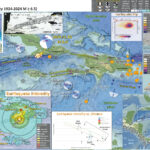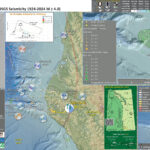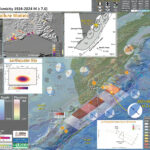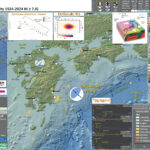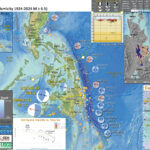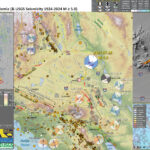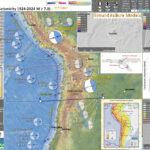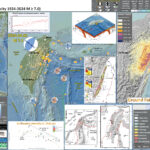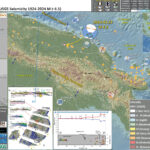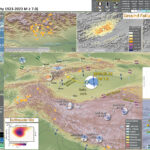Yesterday there was a magnitude M 5.9 earthquake along the south coast of Cuba. Normally I would not take notice, but this event was located along a plate boundary fault. https://earthquake.usgs.gov/earthquakes/eventpage/us7000nr0n/executive The Septentrional–Oriente fault is a transform plate boundary where…
Earthquake Report: M 4.4 Mendocino triple junction
This past week has been a busy week for earthquakes in California. Both northern and southern. There was a M 4.4 earthquake sequence in Petrolia, CA. I contacted my friend Thomas Dunklin as these earthquakes were exactly underneath him (he…
Earthquake Report: M 7.0 Kamchatka
I was in the San Francisco Bay area last weekend to see Phil Lesh (the bassist for the Grateful Dead) and many others at the 4th Sunday Daydream at McNears Park along the bay. Phil came down ill so was…
Earthquake Report: M 7.1 Japan
A few days ago (as I write this) there was a magnitude M 7.1 earthquake offshore of Japan. https://earthquake.usgs.gov/earthquakes/eventpage/us6000nith/executive The plate tectonics of Japan is dominated by compressional forces. Convergent plate boundaries are where plates move towards each other. In…
Earthquake Report: M 6.8 & M 7.1 offshore of the Philippines
Stand By: Earthquake Report in Progress ;-) A few weeks ago there was a magnitude M 7.1 earthquake to the southwest of today’s M 6.8 earthquake. I will describe both earthquakes a bit here. 11 July 2024 M 7.1: https://earthquake.usgs.gov/earthquakes/eventpage/us7000myfa/executive…
Earthquake Report: M 4.9 Barstow, California
Well, as I was driving to town to pay a bill (as we all do), I got my alert of a M 4.5 (later changed to 4.9) earthquake in southern California. I immediately drove back to the office to prepare…
Earthquake Report: M 7.4 Chile/Bolivia
Today there was a magnitude M 7.4 earthquake near the border of Chile and Bolivia. https://earthquake.usgs.gov/earthquakes/eventpage/us7000n05d/executive https://www.emsc-csem.org/Earthquake_information/earthquake.php?id=1684754 It reminded me of an earthquake last month along the coast of Peru. I started working on a report and will follow up…
Earthquake Report: M 7.4 Earthquake in Taiwan
Just as my workday was wrapping up, I got my notification of an earthquake in Taiwan and, shortly thereafter, a call from my boss. There was a possibility of a tsunami, so I stay tuned in the case that I…
Earthquake Report: M 6.9 Papua New Guinea
There was a large earthquake today in Papua New Guinea, magnitude M 6.9. https://earthquake.usgs.gov/earthquakes/eventpage/us6000mksx/executive There was a M 7.0 earthquake in a nearby location (albeit almost twice as deep as today’s M 6.9). Here is the report for that earthquake.…
Earthquake Report: M 7.0 China
A couple days ago there was a magnitude M 7.0 earthquake in western China. https://earthquake.usgs.gov/earthquakes/eventpage/us7000lsze/executive This earthquake happened in a remote area of China with a low population density. While the earthquake was relatively shallow (about 25 km or 15…
